Discover Sidedoor
Sidedoor

Sidedoor
Author: Smithsonian Institution
Subscribed: 25,605Played: 305,602Subscribe
Share
© Smithsonian 2016
Description
More than 154 million treasures fill the Smithsonian’s vaults. But where the public’s view ends, Sidedoor begins. With the help of biologists, artists, historians, archaeologists, zookeepers and astrophysicists, host Lizzie Peabody sneaks listeners through the Smithsonian’s side door, telling stories that can’t be heard anywhere else. Check out si.edu/sidedoor and follow @SidedoorPod for more info.
236 Episodes
Reverse
American newspaper publisher and all-around eccentric, Charles Francis Hall, was an unlikely candidate to become an Arctic explorer. Nevertheless, he made three trips to the frozen north, until he died there under suspicious circumstances. Sharpen your powers of deduction and join us on Sidedoor for an epic frozen whodunit, featuring shipwreck, romance, and a social media darling with a dark secret. We’re resharing this longtime favorite from 2021 to bring you some wintry vibes. Guests:Stephen Loring, anthropologist and archeologist at the Arctic Studies Center of the Smithsonian’s National Museum of Natural History Heidi Moses, volunteer with the Smithsonian Transcription CenterEmily Niekrasz, social media manager, Smithsonian Institution
It started with a messy lab and a mysterious mold. But turning “mold juice” into the world’s first antibiotic would take a sick policeman, a market cantaloupe, and an extraordinary wartime collaboration between scientists, governments, and industry. This is the story of how penicillin changed the world.Guests:Kevin Brown, Trust Archivist to Imperial College Healthcare NHS Trust and curator of the Alexander Fleming Laboratory Museum at St. Mary’s Hospital; author of Penicillin Man: Alexander Fleming and the Antibiotic RevolutionDiane Wendt, curator in the Division of Medicine and Science at the Smithsonian's National Museum of American History
A mystery hidden in time. Wrapped in gold. Stowed secretly in Lincoln's pocket. We dig into the family story of a secret message etched inside Abraham Lincoln's pocket watch. Is this a tall tale or a hidden piece of history waiting to be discovered? Join us as we dive into this incredible tale of family lore, historical detective work, and the Smithsonian's decision to open a priceless artifact. Guests: Lisa Kathleen Graddy, curator of American political history at the Smithsonian's National Museum of American HistoryHarry Rubenstein, curator emeritus in the Division of Political History at the Smithsonian's National Museum of American HistoryDoug Stiles, great-great-grandson of watchmaker Jonathan Dillon
Sidedoor returns for its twelfth season on Wednesday, November 26th!
Why are capuchin monkeys kidnapping howler monkey babies in Panama? We investigate this bizarre case of primate abduction with researchers working with the Smithsonian to get to the bottom of this bizarre behavior. We'll talk about their discoveries, the social dynamics between capuchins and howler monkeys, and the bizarre island conditions that might be driving this behavior. Is it boredom? Is it social learning? Or is something else entirely at play? Travel with us to the Smithsonian Tropical Research Institute (STRI) in Panama to uncover this monkey mystery!Guests: Zoë Goldsborough, visiting researcher at the Smithsonian Tropical Research Institute in Panama and a behavioral ecologist at the Max Planck Institute of Animal Behavior Brendan Barrett, visiting researcher at the Smithsonian Tropical Research Institute in Panama and an evolutionary behavioral ecologist and evolutionary anthropologist at the Max Planck Institute of Animal Behavior
It’s the most recognizable TV theme in America. But Jeopardy’s “Think Music” wasn’t originally written for a game show… It was written for a toddler. In this episode, we trace the unlikely journey of the Jeopardy theme, from Merv Griffin’s living room to over 10,000 episodes across six decades. Along the way, we explore the show’s sonic evolution, including honking buzzers, 80s synths, and orchestral remixes. Featuring Lisa Broffman, Jeopardy’s Consulting Co-Executive Producer.This episode was written & produced by Casey Emmerling.Visit the Smithsonian's National Museum of American History to see some of the Jeopardy objects we have in the collection. MUSIC FEATURED IN THIS EPISODEHarry Endivo - Don’t Bore Me Alberto!Medité - This Round's On MeFlickering - The SquadAndreas Dahlbäck - 808 or 909Trevor Kowalski - Watercolor Motion IGavin Luke - The Power of One Art by Michael Zhang.This episode of Twenty Thousand Hertz is part of our summer playlist to keep you entertained while Sidedoor is on summer break. We’ll be back in the fall with brand new episodes of Sidedoor.
Ana María Bedoya's work takes her to some unlikely places: steep cliffs, river rapids, and tumbling waterfalls— all in search of vulnerable aquatic plants. Through lively stories and conversations with scientists, gardeners, artists, and experts, join the New York Botanical Garden (NYBG) for deep dives into everything from food systems and horticulture to botanical breakthroughs in the lab and the field, and the many ways our daily lives are sustained by plants.This episode of Plant People is part of our summer playlist to keep you entertained while Sidedoor is on summer break. We’ll be back in the fall with brand new episodes of Sidedoor.
Children say it every day in school, but have you ever wondered why we recite the pledge of allegiance? We journey back to the late 1800s to understand how a massive wave of immigration and sagging magazine subscriptions gave rise to this vow of patriotism. From the Civil War to anti-immigrant nativism and Cold War politics, this one pledge tells many stories. Guests: Debbie Schaefer-Jacobs, curator for the history of education collection at the Smithsonian’s National Museum of American HistoryMarc Leepson, author of Flag: An American Biography
When a black bear in Minnesota woke up from hibernation in the middle of winter and attacked three people and a dog, researchers were left with one question: Why?***This episode of the Points North podcast is part of our summer playlist to keep you entertained while Sidedoor is on summer break. We’ll be back in the fall with brand new episodes of Sidedoor. Credits: Producer: Ellie Katz Editor: Morgan Springer Additional Editing: Michael Livingston, Dan Wanschura Additional Production: Matthew Mikkelsen of Hayloft Audio Music: Blue Dot Sessions
Turtles are built like tiny tanks—ancient, armored, and famously tough. But in the modern world, that toughness may be their greatest vulnerability. In part two of our turtle two-parter, we dive into the shadowy world of turtle trafficking, where backyard collectors, international smugglers, and unsuspecting pet owners all play a role. From sting operations to turtle triage, we meet the unlikely defenders working to stop the trade—and care for the reptiles caught in the middle. Because once a turtle is taken from the wild, getting it home again is a lot harder than you’d think.GuestsThomas Akre, head of the Turtle Conservation Ecology Lab at the Smithsonian’s National Zoo and Conservation Biology Institute John (JD) Kleopfer, State Herpetologist for the Virginia Department of Wildlife ResourcesFirst Sergeant Tim Dooley, Assistant Special Agent in Charge of Special Operations for the Virginia Conservation Police, Department of Wildlife Resources Connor Gillespie, Director of Outreach at the Wildlife Center of Virginia Dr. Karra Pierce, Director of Veterinary Services at the Wildlife Center of Virginia
Turtles have been around for 200 million years—outliving dinosaurs, surviving ice ages, and basically minding their own business the whole time. Tough on the outside, chill on the inside, they seem built to last. So why are they suddenly disappearing? In part one of this two-part series, we hit the trail in search of one surprisingly elusive reptile: the eastern box turtle. These ancient creatures may seem slow, but their decline is happening fast. And the scariest part? We barely understand what it could mean.Guests:Thomas Akre, head of the Turtle Conservation Ecology Lab at the Smithsonian’s National Zoo and Conservation Biology Institute Maxwell Earle, outreach and engagement coordinator for the Turtle Conservation Ecology Lab at the Smithsonian's National Zoo and Conservation Biology Institute Chris Polinski, lab manager for the Turtle Conservation Ecology Lab at the Smithsonian's National Zoo and Conservation Biology Institute
Leeches don’t get a lot of love. They’re slimy, wriggly, and, well, they suck—blood that is. But there’s a lot to learn about the lowly leech. Led by a troupe of Smithsonian experts, we’ll discover how these toothy hangers-on wormed their way into medical practices, performance art, and EVERY human cavity. Yes, even that one. It's a journey of discovery from the swamp to the stage and deep into the vaults of the Smithsonian. And it just may leave you with a little more appreciation (dare we say, love?) for the bloodsuckers.Guests: Anna J. Phillips, research zoologist and curator of Clitellata and parasitic worms at the Smithsonian’s National Museum of Natural HistoryRachel Anderson, project specialist at the Smithsonian’s National Museum of American HistoryJosh T. Franco, national collector at the Smithsonian Archives of American Art, former Smithsonian Artist Research Fellowship selection committee memberRoberto Sifuentes, performance artist and arts instructor at the School of the Art Institute of Chicago, former fellow with the Smithsonian Artist Research FellowshipAram Han Sifuentes, leech wrangler, social practice fiber artist, writer, curator, and adjunct professor at the School of the Art Institute of Chicago
The Gilded Age was a time of unparalleled wealth and prosperity in America — but it was also a time of staggering inequality, corruption, and unchecked power. Among its richest figures was Andrew Carnegie, the steel magnate who built his fortune on the backs of low-paid workers, only to give it away — earning him the nickname the Godfather of American Philanthropy. He didn’t just fund libraries and universities — he championed a philosophy: that it was the duty of the ultra-wealthy to serve the public good.But, as it turns out, even philanthropy is a form of power. So, what exactly have wealthy philanthropists done with their power? We explore that question at the Cooper Hewitt, Smithsonian Design Museum, inside Carnegie’s former mansion. There, a board game called Philanthropy invites players to reimagine the connection between money and power — not by amassing wealth, but by giving it away.Guests: Christina de León, Associate Curator of Latino Design at the Cooper Hewitt, Smithsonian Design Museum Tommy Mishima, artist and co-creator (with Liam Lee) of the installation “Game Room” in Cooper Hewitt's triennial Making Home David Nasaw, author of the biography Andrew Carnegie
If you were curating a mixtape that might be heard by aliens billions of years from now - but definitely would be seen by your fellow Earthlings - what would you put on it? In 1977, two Voyager spacecraft launched from Cape Canaveral on a journey that would take them beyond our solar system. Affixed to the side of these two planetary explorers was the Voyager Golden Record — the ultimate mixtape of humanity — containing 27 pieces of music as well as pictures and sounds of Earth. But how did these selections get made? Nearly 50 years later, we're teaming up with our friends at the Smithsonian National Air and Space Museum’s podcast, AirSpace, to explore what's on the record, how it got made, and its legacy.Learn more about AirSpace! Airspace Hosts: Matthew Shindell, curator of space history at the Smithsonian’s National Air and Space MuseumEmily Martin, planetary geologist at the Smithsonian’s National Air and Space MuseumGuests:Ann Druyan, Voyager Golden Record Creative DirectorLawrence Azerrad, Co-founder of Macroscopic
The Curious Case of the Dizzy Kudu. Rhinos with an unexplained skin disease. A lion that could barely chew. Who do you call when there's a mystery at the zoo? The Smithsonian National Zoo and Conservation Biology Institute's anatomical pathologists. These highly-skilled vets search for clues to investigate animal disease and death — sometimes encountering bizarre phenomena. So, grab your microscope and get ready to head through a very special side door of the National Zoo — the necropsy lab. And you're in luck, because pathologist Kali Holder is our guide! Guests:Kali Holder, anatomic pathologist at the Smithsonian's National Zoo and Conservation Biology Institute
From the time we’re old enough to hold a crayon, it feels instinctive to draw on the wall. But for MISS CHELOVE – also known as Cita Sadeli – this instinct became a calling. Through bold color and layered symbolism, she transforms everyday public spaces into deeply personal statements, inspiring some passers-by to wonder: what is the role of the public artist? And how can public art both reflect and shape a community's identity?Guests:MISS CHELOVE (also known as Cita Sadeli), independent Washington D.C. - based art director, muralist, designer, and illustrator Sojin Kim, curator for the Smithsonian Asian Pacific American Center’s exhibition: Sightlines, Chinatown and Beyond
Cellphones put the power of the world at our fingertips. With the touch of a finger, you can instantly connect with your doctor, have food delivered to your office or simply obliterate your niece at Words with Friends. And it's all made possible by rocks formed millions of years ago, deep underground. Join us as we bust open our devices to figure out how these stones power our phones.Guests:Joshua A. Bell, curator of globalization at the Smithsonian’s National Museum of Natural HistoryMichael Wise, geologist in the department of mineral sciences at the Smithsonian's National Museum of Natural HistoryJosh Lepawsky, professor of geography at Memorial University of Newfoundland
The United States has more martial arts schools than any other country – by far. Chances are you or someone you know practiced karate or another martial art growing up. While martial arts gained popularity in the U.S. for many reasons, one name stands out: Jhoon Rhee. Known as the Father of American Taekwondo, Rhee famously taught Bruce Lee how to kick and Muhammed Ali how to punch. His bare-knuckled American dream made an impact on generations of Americans.Guests: Terence Nicholson, a D.C.-based artist. Creator of Safety Jacket: A Mourning in ChinatownSojin Kim, curator for the Smithsonian Asian Pacific American Center’s exhibition: Sightlines, Chinatown and BeyondM. Aziz, an Assistant Professor of African American Studies in the Department of American Ethnic Studies at the University of WashingtonChun Rhee, son of Jhoon RheeJimmy Rhee, son of Jhoon Rhee
A billion-dollar spacecraft, a daring deep-space mission, and one of humanity’s biggest questions: Where did we come from? NASA’s OSIRIS-REx set out to collect a pristine sample from asteroid Bennu, a cosmic time capsule that may hold clues to the origins of life in our solar system. But the journey was anything but easy.Guests:Erica Jawin, postdoctoral research geologist in the Center for Earth and Planetary Studies at the Smithsonian’s National Air and Space Museum and member of the OSIRIS-REx missionTim McCoy, curator of meteorites at the Smithsonian's National Museum of Natural History and deputy mission sample scientist for the OSIRIS-REx missionMike Moreau, deputy project manager in the Space Science Mission Operations Project at NASA’s Goddard Space Flight Center
When we think of serial killers, we tend to think of men—Ted Bundy, Jeffrey Dahmer, Jack the Ripper. But in the 1800s, the deadliest killers often wore corsets. In fact, so many women were arrested for serial poisoning that the era became known as the “Golden Age of Arsenic.” Journey back in time to trace the crimes of Lydia Sherman, a Victorian Era femme fatale who left a trail of bodies in her wake. How did she — and women like her — evade capture for so long? And how did their murders help give rise to modern criminal forensics?Guests: Kristen Frederick-Frost, curator of science at the Smithsonian's National Museum of American History Lisa Perrin, author and illustrator of The League of Lady Poisoners Deborah Blum, author of The Poisoner's Handbook. Director of the Knight Science Journalism Program at MIT.





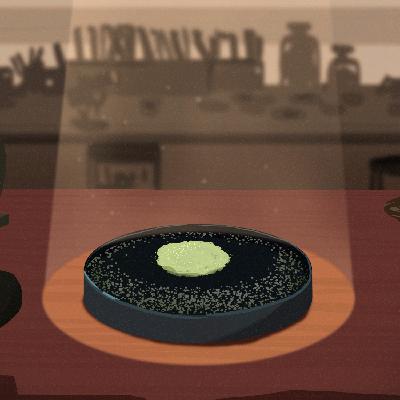
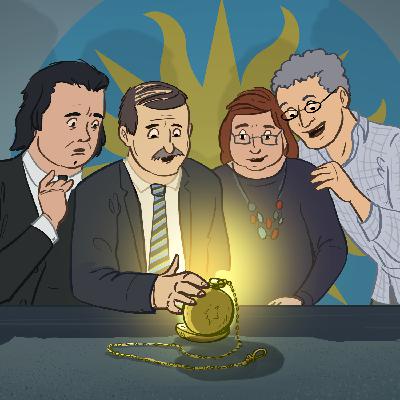






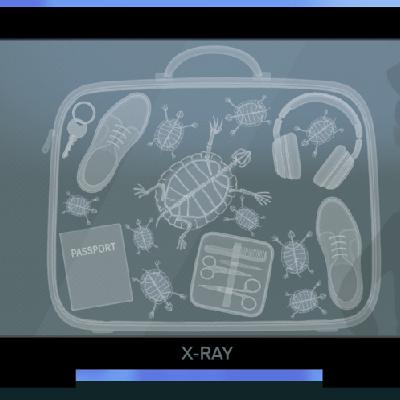

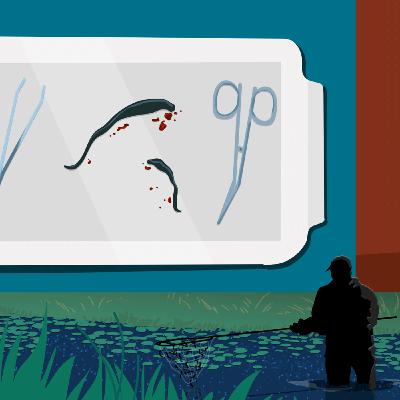
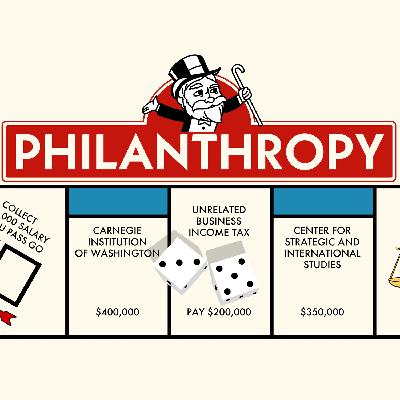
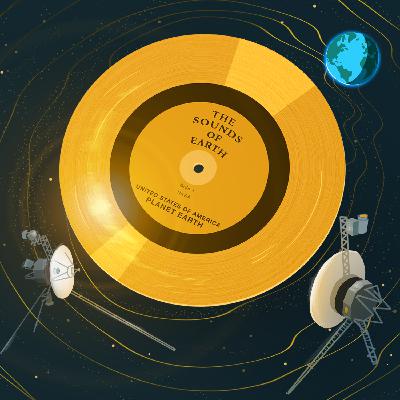
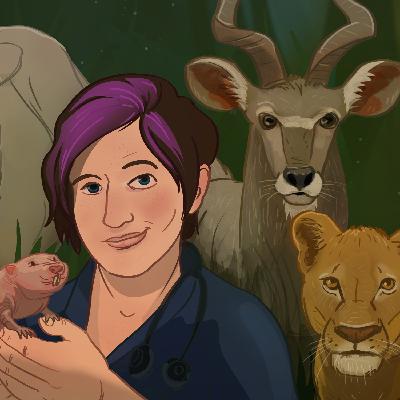
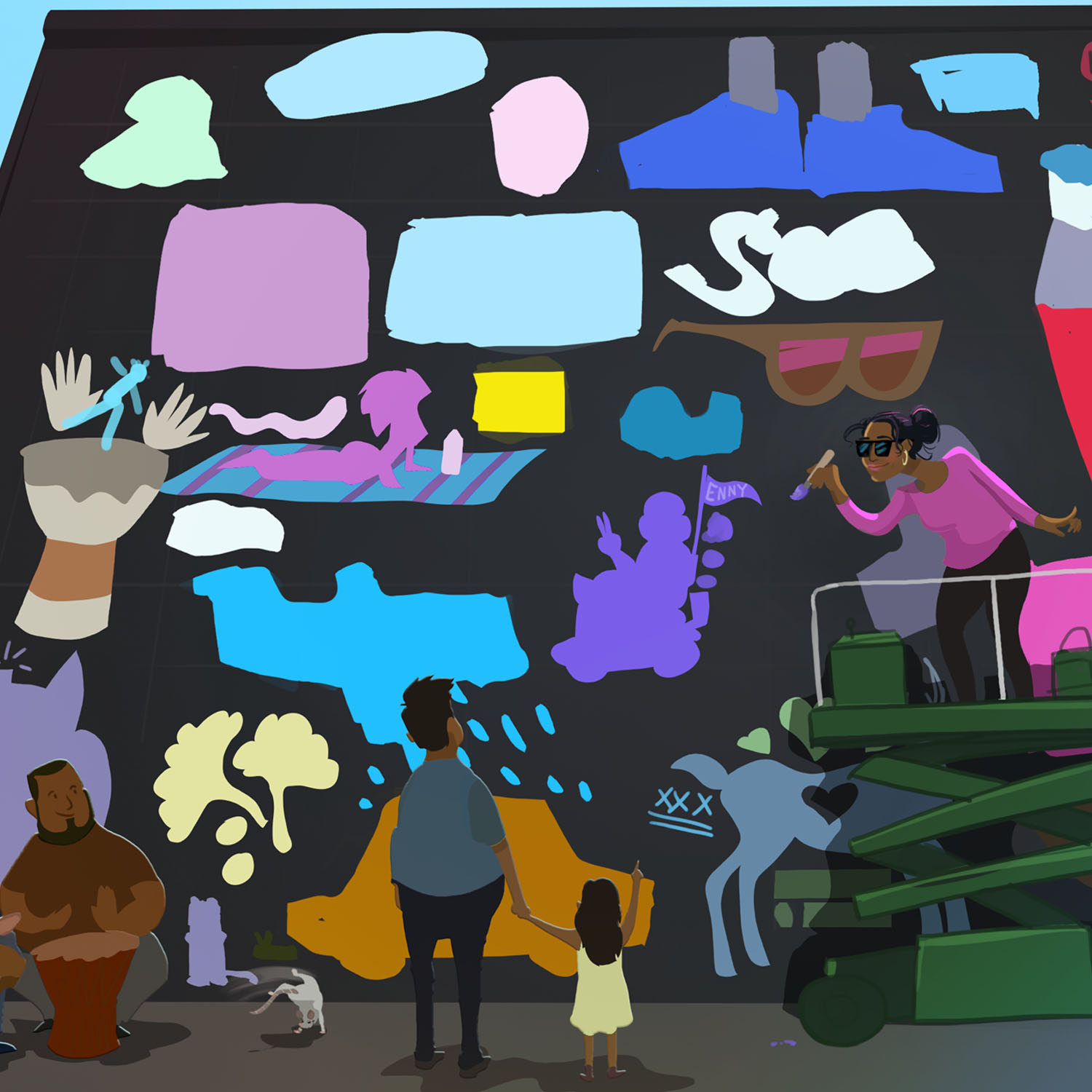

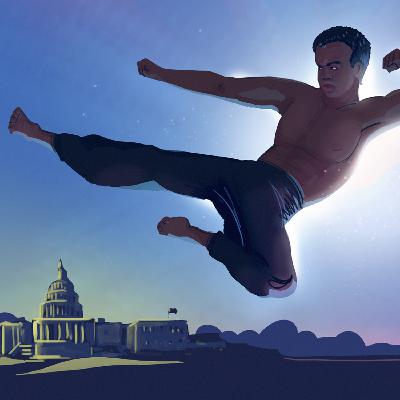

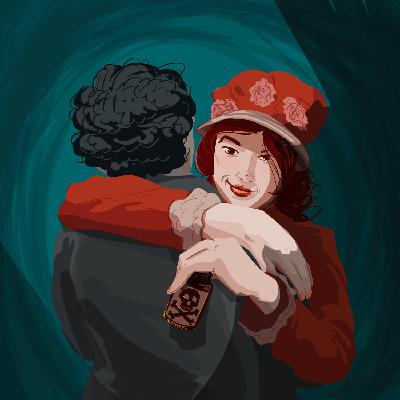



Lucy Worsley has a whole podcast called Lady Killers for those interested.
I've been consistently impressed by 'Sidedoor' and its ability to dive into fascinating, lesser-known stories with such depth and nuance. The hosts have a real knack for uncovering hidden gems and presenting them in a compelling and engaging way. https://canada-butcher-paper.podigee.io/1-new-episode
I love hearing about Orangutans
According to the BBC, the non-renewal of the loan has nothing to do with reproductive life issues. Instead, they claim it is a reflection of the political climate.
@06:26: This was pretty dumb. The guy could've simply noted that the tools used to make a wooden chair use mined materials. It would've saved him from that absurd stretch of his.
great story
I appreciated hearing this story as a matter of history, but was quite disappointed by the over-simplified, self-righteous advocacy masquerading as facts or expertise. This podcast is quite often childishly simplistic and obnoxiously preachy when it deals with complex subjects.
Very interesting episode. Too bad the post-script story cut off at the end.
Sounds like a guy so identified with victimhood that he takes offense at perfectly innocuous interactions. This sort of uncharitable, eagerly vengeful mock frailty is antithetical to liberalism and social capital. It shouldn't be celebrated.
I'm grateful to the people who help people like me learn these histories that I haven't heard otherwise. Many of these stories and facts are gut-wrenching, but I would rather know them than not.
@32:25: "Alums"?! Are they salts? No, good grief; you mean alumni.
Kim Sajet's relentless self-promotion seems to pay off for her. Rather than promoting the work and people of the National Portrait Gallery, she seems to take every opportunity to act as if she *is* the NPG. Maybe once in a blue moon, someone else at NPG could be interviewed--maybe even actual experts.
It's unfortunate that this episode did not mention that, whereas planting most milkweeds benefits monarchs, planting *Mexican* milkweed in more northern latitudes can signal some monarchs to end their southern migrations prematurely.
I kept waiting for a reasonable discussion of race in this episode, but as with so much other racially charged blather, it's just a bait-and-switch fueled by identity-based victimhood and salacious race-baiting. The actual merits all related to income and poverty, yet the host and guest sanctimoniously acted as if all black people are poor and all poor people are black, neither of which is true. We don't need to use race as a blunt proxy for income, wealth, or socio-economic status. Doing so needlessly imputes racism. Moreover, if these virtue-signalling race-baiters actually think race is a reasonable proxy for wealth, then they seemingly have no basis for objecting to banks, landlords, and employers doing likewise, but that would be ludicrous. And it is equally ludicrous to do so for political convenience or social inflammation. I suppose it would've been too much to expect that the producers might ask whether various minority groups (presumably not just racial ones) are under-re
It would've helped to as the bishop what she means by "spiritual" and "religious" and, if they are at least partially supernatural, what the supernatural aspect adds. (I don't think it would've been fruitful to ask that of Teddy. He didn't seem strongly committed to meaning in words; he seemed more interested in the vernacular of ultra-liberal signalling.)
That was utterly heart-rending. It's the sort of story that helps us understand why so many people would rather forget or look away, and why we absolutely must not.
@24:21: Why do people use double negatives only to trip over them? I think he meant "no overstatement."
I just can't listen to that old-timey pseudo-folksy, aw-shucks propaganda that weaves together scarce apocryphal tidbits with yards of wholecloth.
You guys should take another look at this episode...maybe a new interview with the same guy??
My kid's and I loved the Apolo's 12 close call, what a great history told by your team. Keep up with the good work. YUPPIE